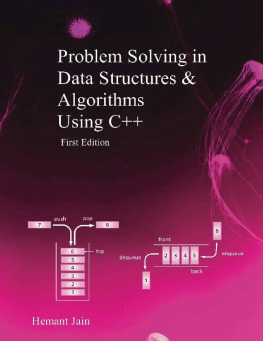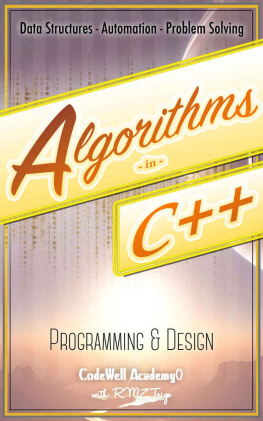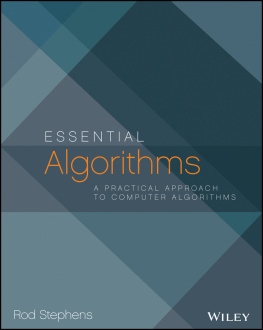Thomas Mailund - Problem Solving, Algorithms, Data Structures, and More
Here you can read online Thomas Mailund - Problem Solving, Algorithms, Data Structures, and More full text of the book (entire story) in english for free. Download pdf and epub, get meaning, cover and reviews about this ebook. year: 2021, publisher: Apress, genre: Home and family. Description of the work, (preface) as well as reviews are available. Best literature library LitArk.com created for fans of good reading and offers a wide selection of genres:
Romance novel
Science fiction
Adventure
Detective
Science
History
Home and family
Prose
Art
Politics
Computer
Non-fiction
Religion
Business
Children
Humor
Choose a favorite category and find really read worthwhile books. Enjoy immersion in the world of imagination, feel the emotions of the characters or learn something new for yourself, make an fascinating discovery.
- Book:Problem Solving, Algorithms, Data Structures, and More
- Author:
- Publisher:Apress
- Genre:
- Year:2021
- Rating:5 / 5
- Favourites:Add to favourites
- Your mark:
- 100
- 1
- 2
- 3
- 4
- 5
Problem Solving, Algorithms, Data Structures, and More: summary, description and annotation
We offer to read an annotation, description, summary or preface (depends on what the author of the book "Problem Solving, Algorithms, Data Structures, and More" wrote himself). If you haven't found the necessary information about the book — write in the comments, we will try to find it.
Problem Solving, Algorithms, Data Structures, and More — read online for free the complete book (whole text) full work
Below is the text of the book, divided by pages. System saving the place of the last page read, allows you to conveniently read the book "Problem Solving, Algorithms, Data Structures, and More" online for free, without having to search again every time where you left off. Put a bookmark, and you can go to the page where you finished reading at any time.
Font size:
Interval:
Bookmark:


This Apress imprint is published by the registered company APress Media, LLC part of Springer Nature.
The registered company address is: 1 New York Plaza, New York, NY 10004, U.S.A.
is an associate professor in bioinformatics at Aarhus University, Denmark. He has a background in math and computer science. For the past decade, his main focus has been on genetics and evolutionary studies, particularly comparative genomics, speciation, and gene flow between emerging species. He has published String Algorithms in C, R Data Science Quick Reference, The Joys of Hashing, Domain-Specific Languages in R, Beginning Data Science in R, Functional Programming in R, and Metaprogramming in R, all from Apress, as well as other books.
is an associate professor of computer science at the IT University of Copenhagen. He is an expert in computational game theory and has been teaching programming and software development for the past seven years.
Using computers as more than glorified typewriters or calculators is an increasingly important aspect of any scientific or technological field, and knowing how to program a computer to solve new problems has become as essential a skill as mathematics. Learning how to program can be a frustrating experience at times since computers require a level of precision and rigor in how we express our ideas, which we rarely encounter elsewhere in life. While occasionally infuriating, programming can also be very rewarding. Programs are created out of pure thought, and it is a special feeling when you make a computer transform your ideas into actions and see it solve your problems for you.
Solving any kind of problem, on a computer or otherwise, requires a certain level of precision. To address the right question, we must first understand what the problem is. We also need to have a precise idea about what an adequate solution to the problem would beor at the very least some way of distinguishing between two solutions to judge if one is better than the other. These are concerns we will need to address in any problem-solving task, but where everyday life might forgive some fuzzy thinking in problem solving, computers are far less forgiving. To solve a problem on a computer, you must first specify with mathematical clarity what the problem is and what a solution is and, after that, how you will go about deriving a solution. And only then can you write a program and put the computer to work.
For the novice programmer, the last stepimplementing a solution in a computer languageis often the most frustrating. Computer programs do not allow any ambiguities, and that means that if you do not abide by the computer languages rulesif you get the grammar wrong in the slightestthe computer will refuse even to consider your program. Learning how to write programs the computer will even attempt to run is the first hurdle to overcome.
Many good books can teach you different programming languages, and it is worth your while getting a few of these about the programming languages you plan to use in your future work. This book is not only about programming, however, but about how computation is done and how you can make computation efficient. Still, from time to time, I will show you tricks for making your programming efficient as well, meaning speeding up how fast you can write your programs, which is a separate issue from how efficient your programs are once you have implemented them. These tricks are generally applicable, provided your programming language supports the features we use, and for a working programmer, efficient programming is as important as efficient programs. I wont cover these tricks as separate topics, but show them when we study topics where they are useful.
For the programming we do in the book, we will use the Python programming language. The Python language is generally considered an excellent first language to learn because of its high-level yet intuitive features, and at the same time, Python is one of the most popular programming languages for scientific programs. It is one of the most frequently used languages for data science. It is number one on the Kaggle machine learning platform ( www.kaggle.com ). It has powerful libraries for machine learning, data analysis, and scientific computing through various software modules. It is also one of the most popular languages for scripting workflows of data analysis and for administrating computer systems.
We will not explore the full language, however, as the book is already long without discussing all the powerful features in Python. But I will show you how the code we write would look if you implemented it like a real Python programmer, with the features of the language you would need to get there. You can safely ignore those parts if you only want to learn the aspects of programming that generalize to other languages and if you are only interested in how to write effective and efficient code. In any language you use regularly, however, it is worth knowing the programming style and idioms for that language. Styles do not directly translate from one language to another, since what is easy to do in one might be hard in another and vice versa. Spend the time to learn how experienced programmers use a language when you learn it, if you want to be effective.
Font size:
Interval:
Bookmark:
Similar books «Problem Solving, Algorithms, Data Structures, and More»
Look at similar books to Problem Solving, Algorithms, Data Structures, and More. We have selected literature similar in name and meaning in the hope of providing readers with more options to find new, interesting, not yet read works.
Discussion, reviews of the book Problem Solving, Algorithms, Data Structures, and More and just readers' own opinions. Leave your comments, write what you think about the work, its meaning or the main characters. Specify what exactly you liked and what you didn't like, and why you think so.

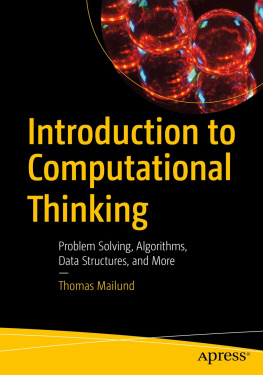
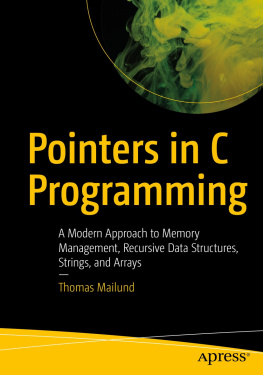
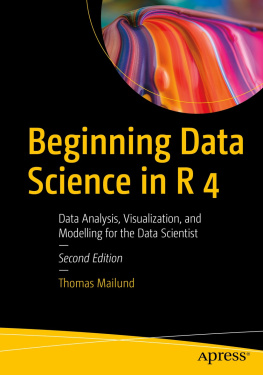

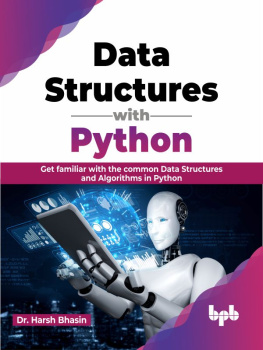
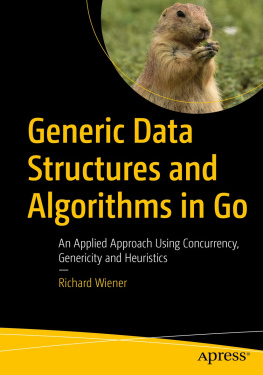

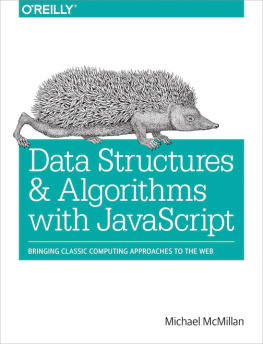
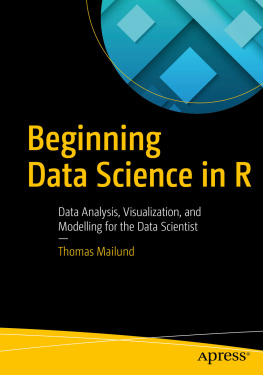
![Thomas Mailund [Thomas Mailund] - The Joys of Hashing: Hash Table Programming with C](/uploads/posts/book/124069/thumbs/thomas-mailund-thomas-mailund-the-joys-of.jpg)
![Thomas Mailund [Thomas Mailund] - Beginning Data Science in R: Data Analysis, Visualization, and Modelling for the Data Scientist](/uploads/posts/book/119629/thumbs/thomas-mailund-thomas-mailund-beginning-data.jpg)
